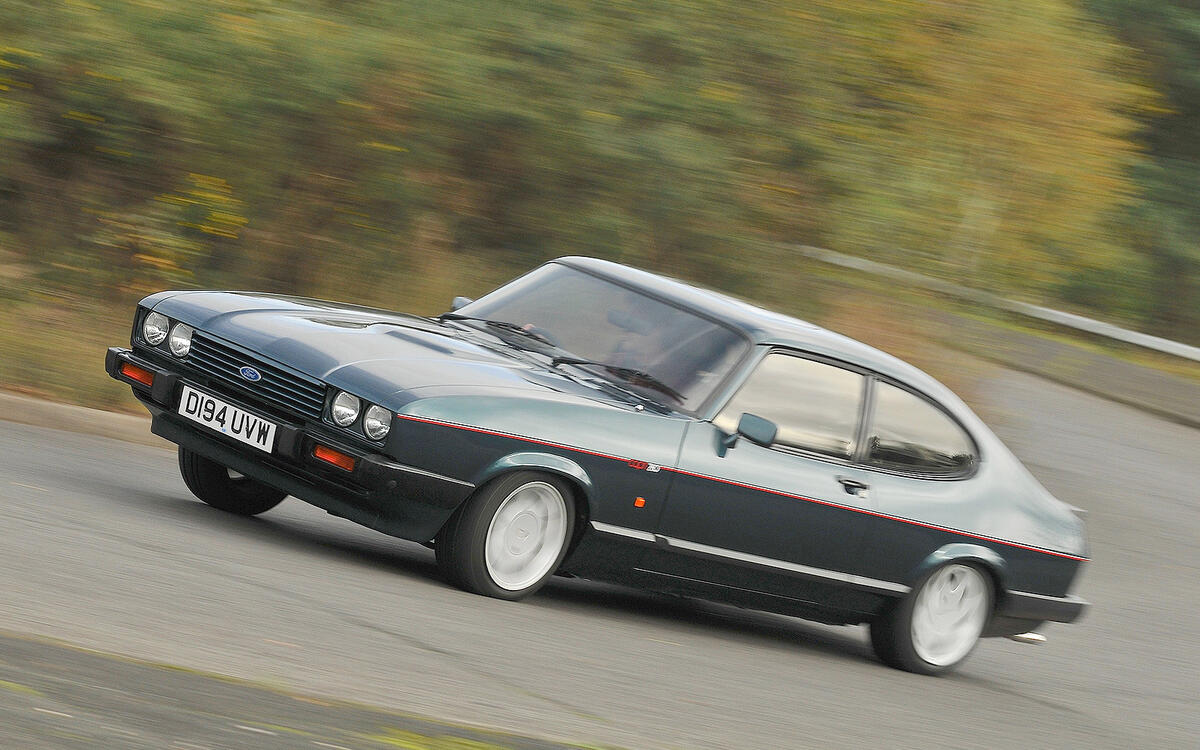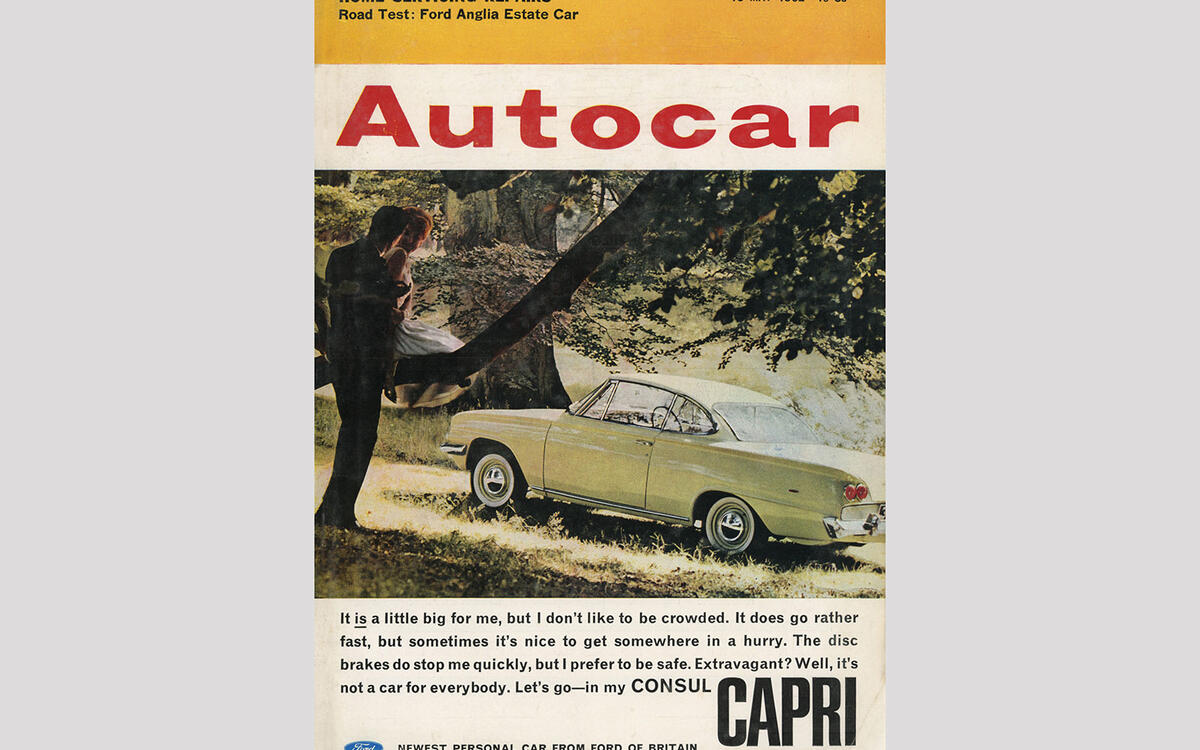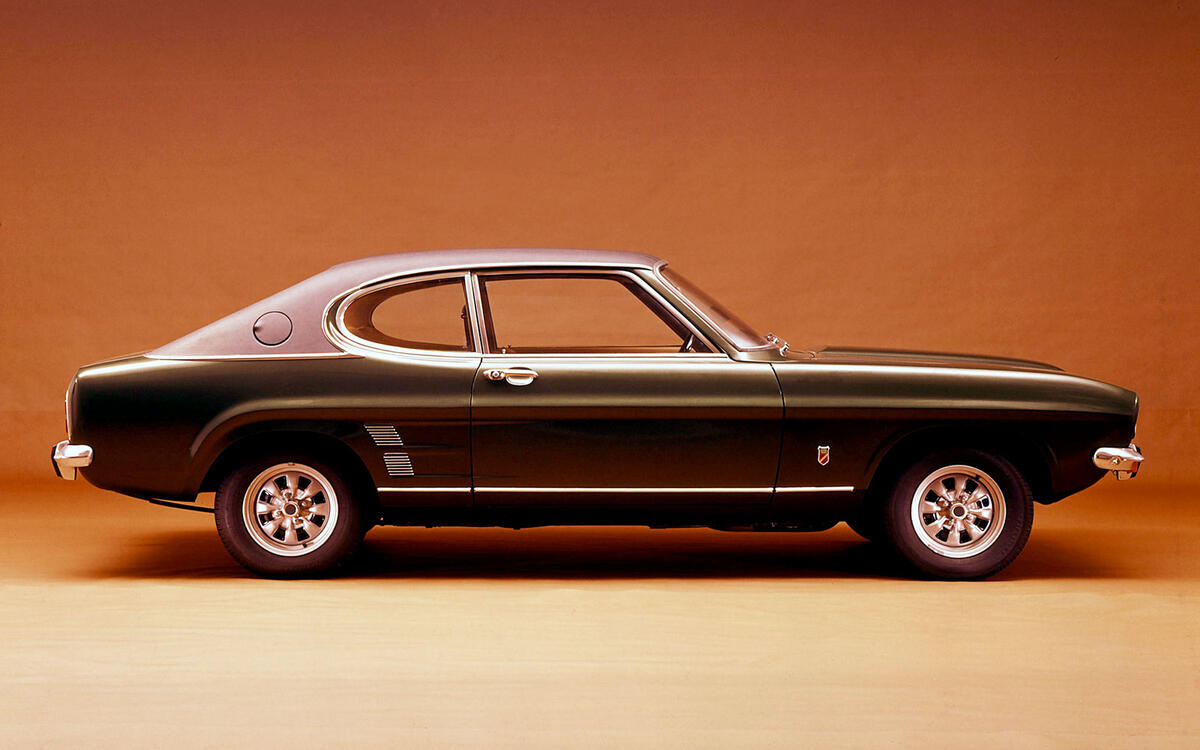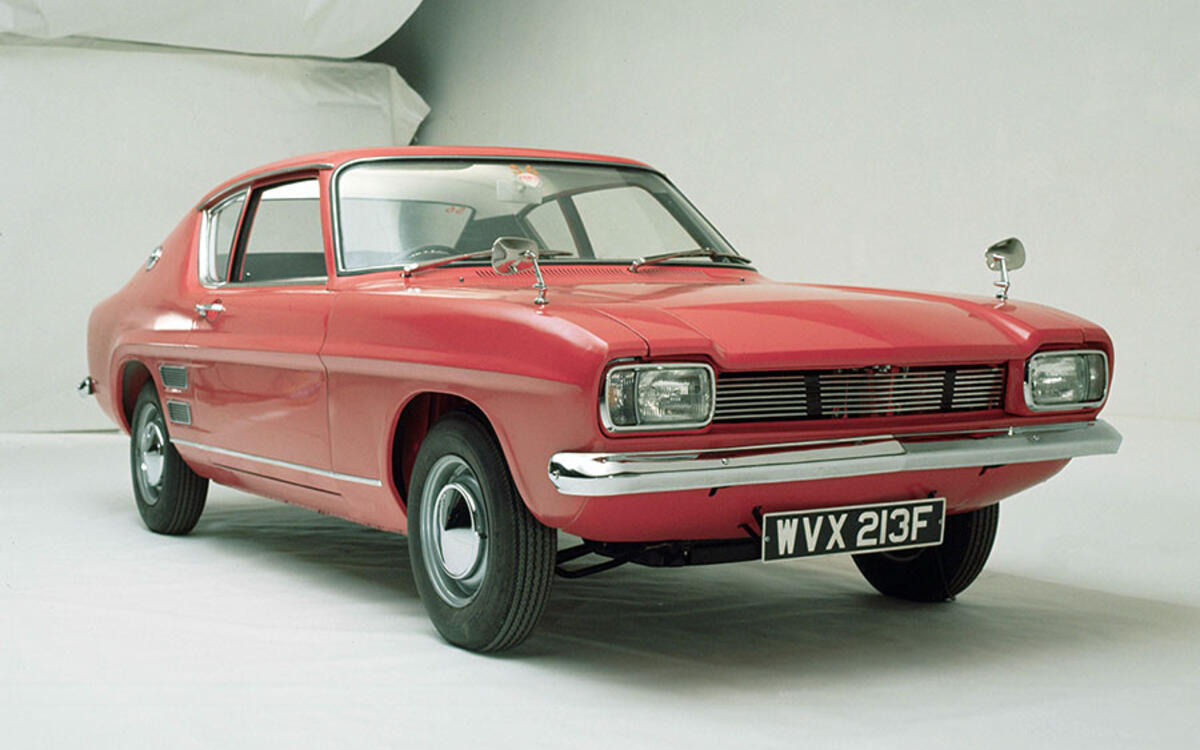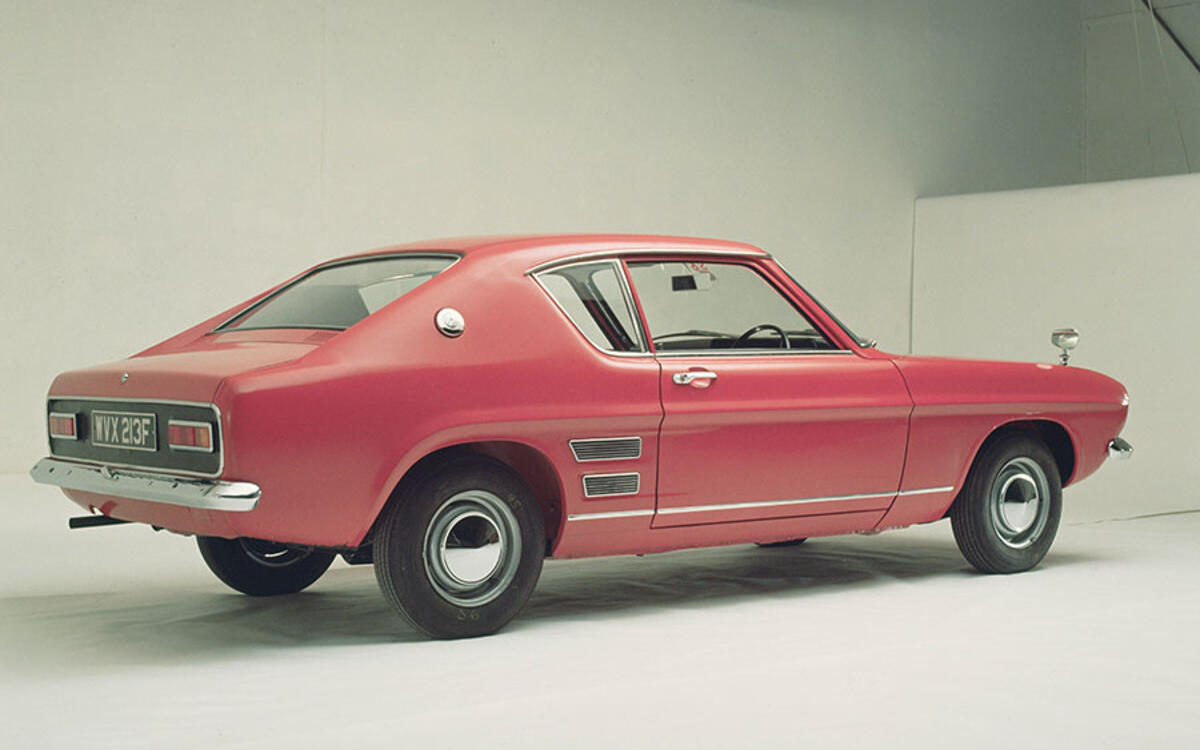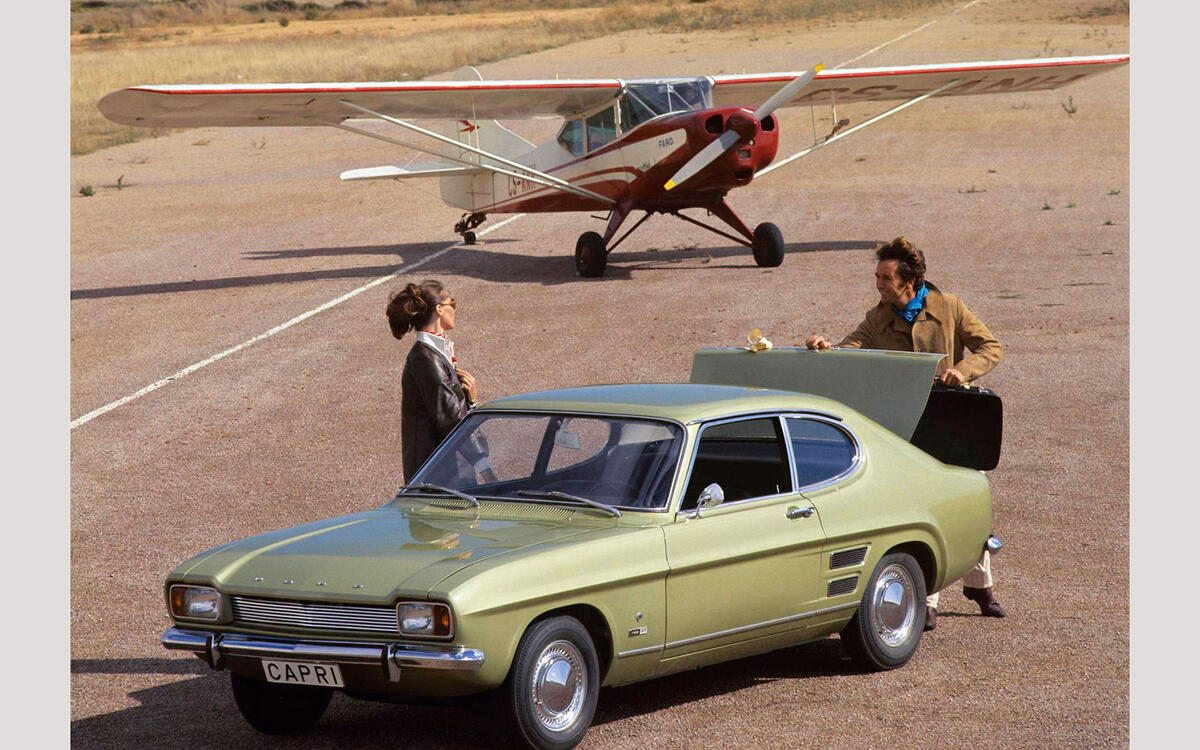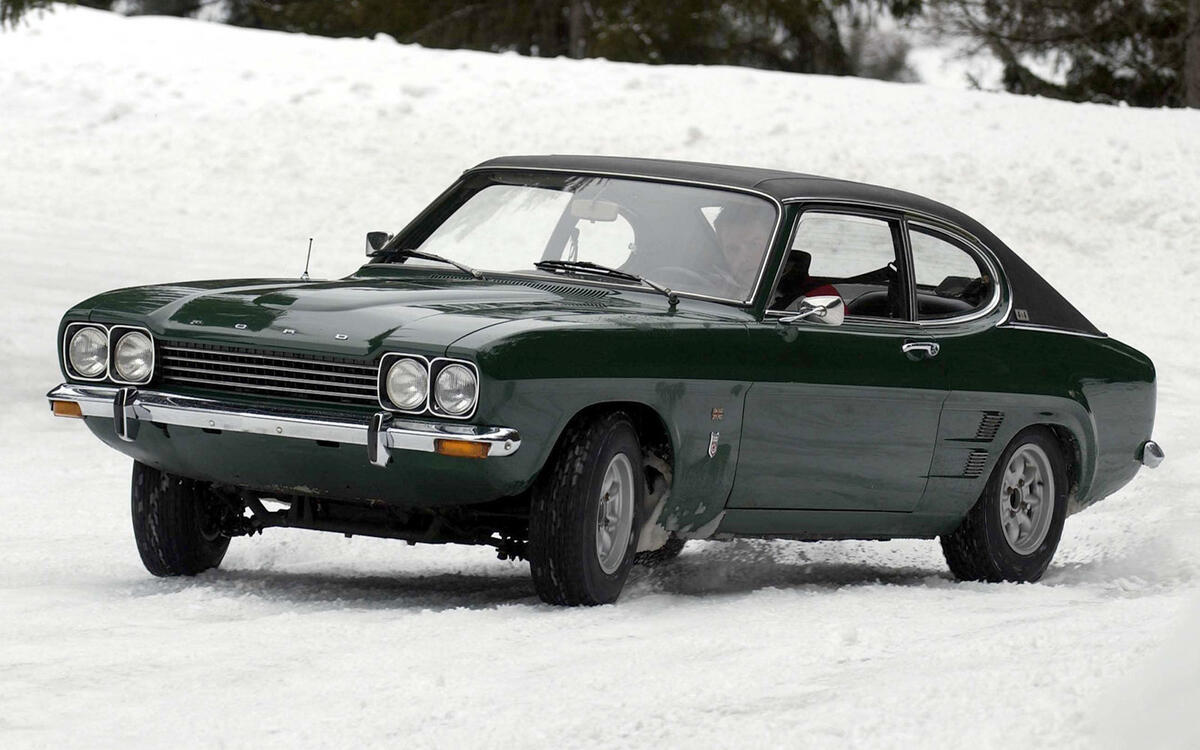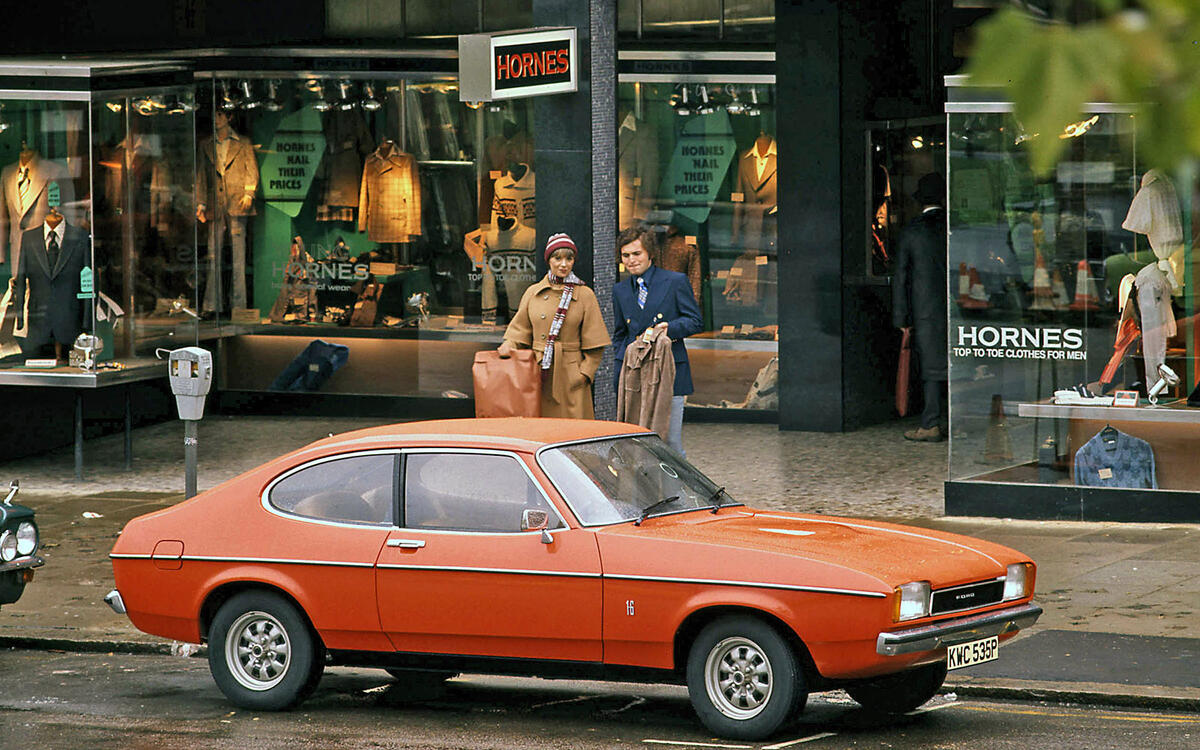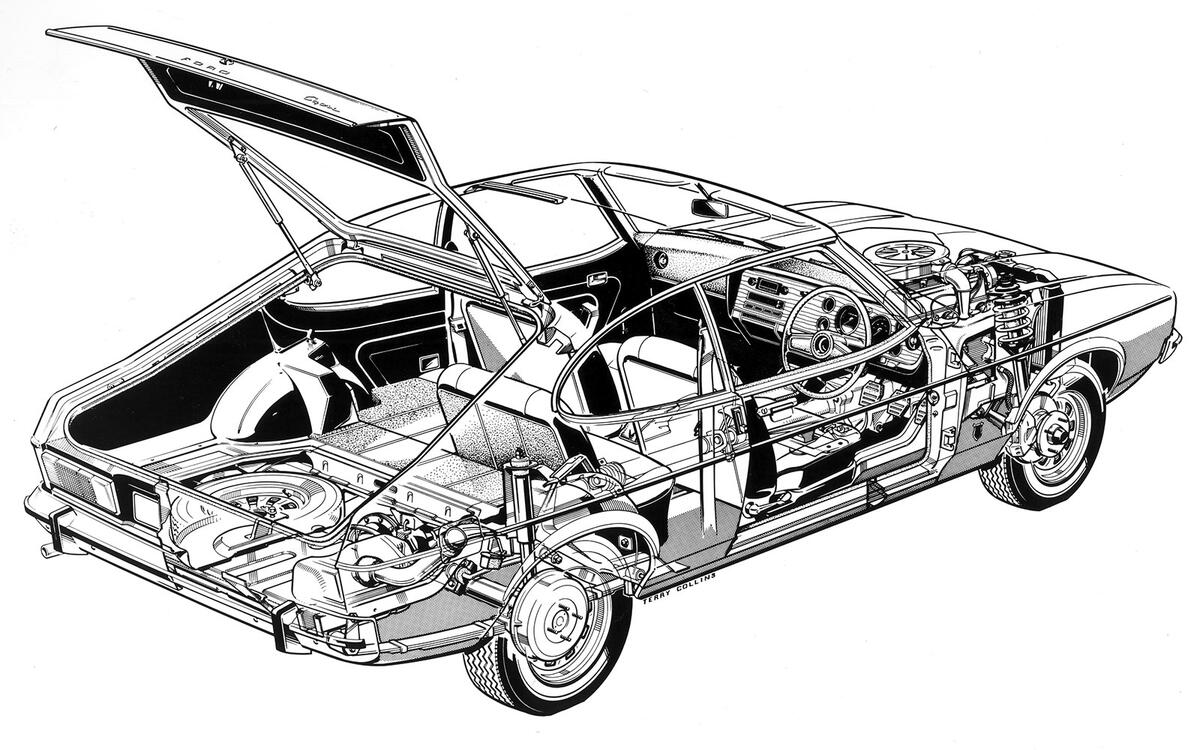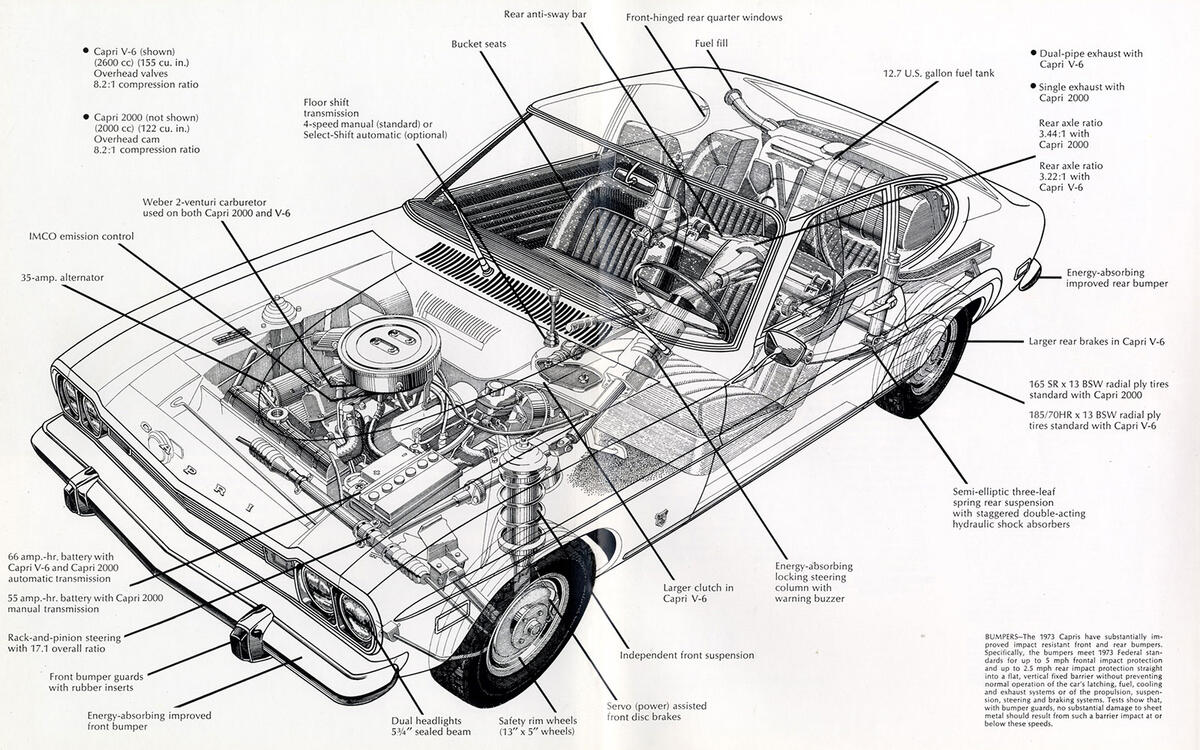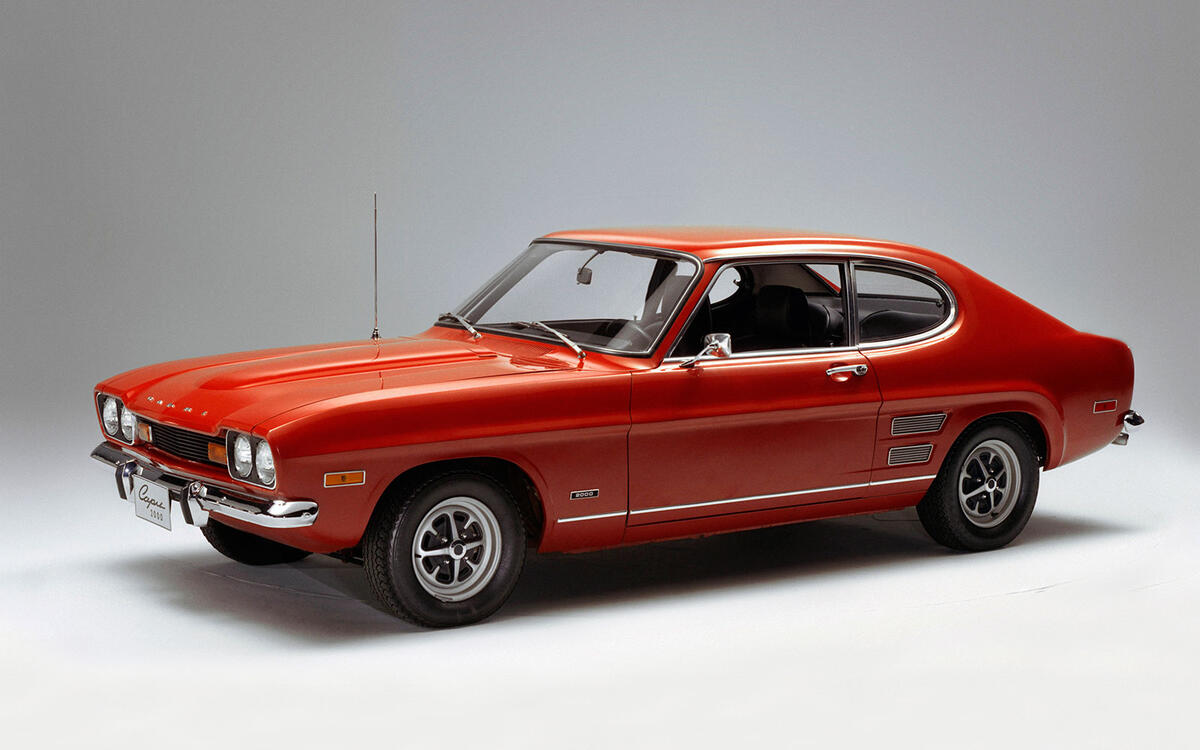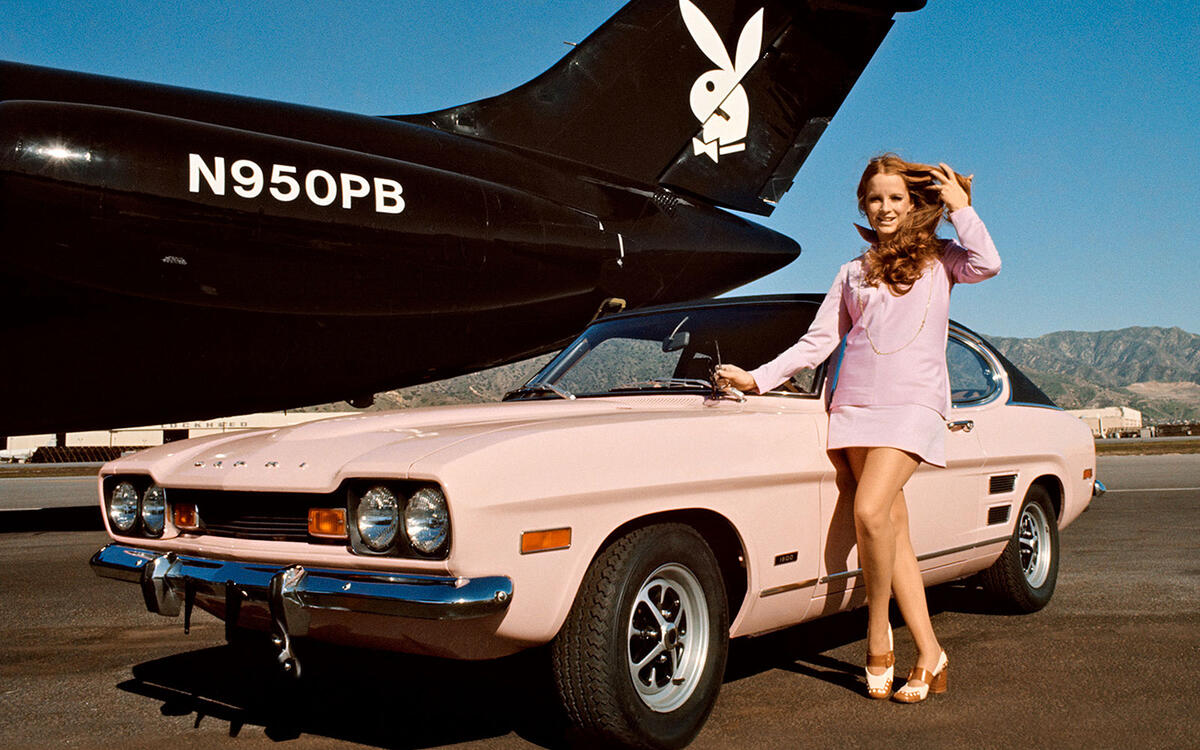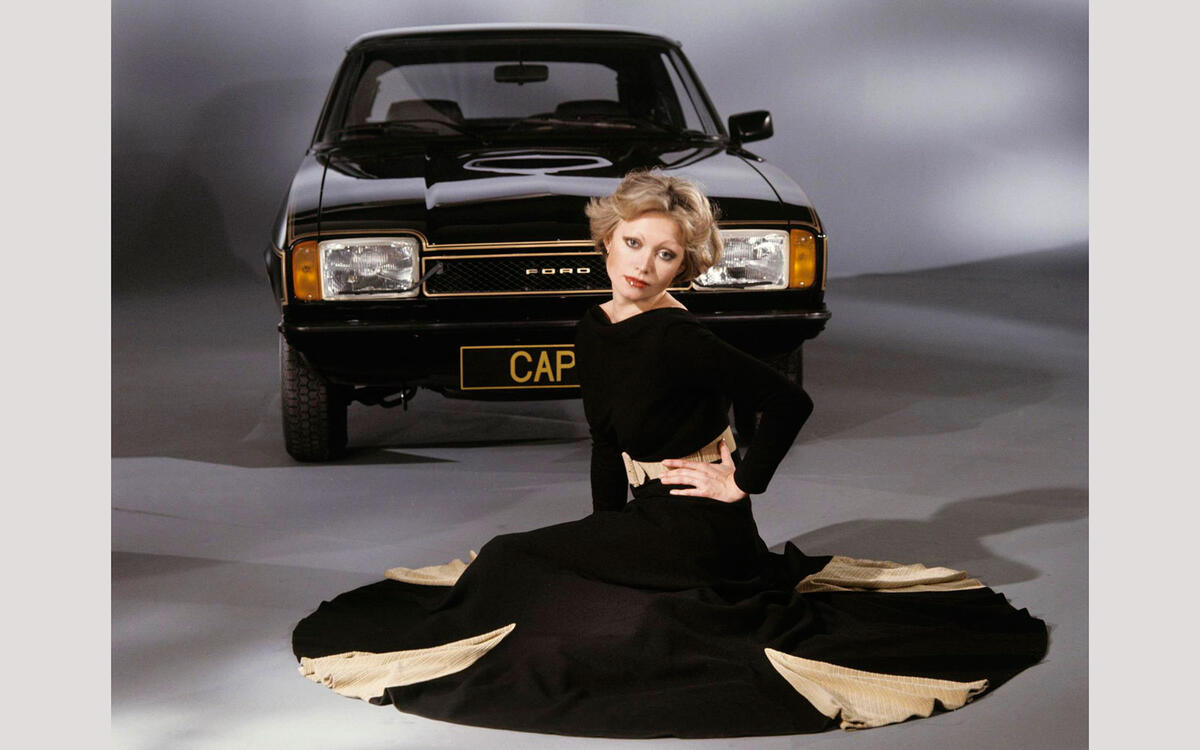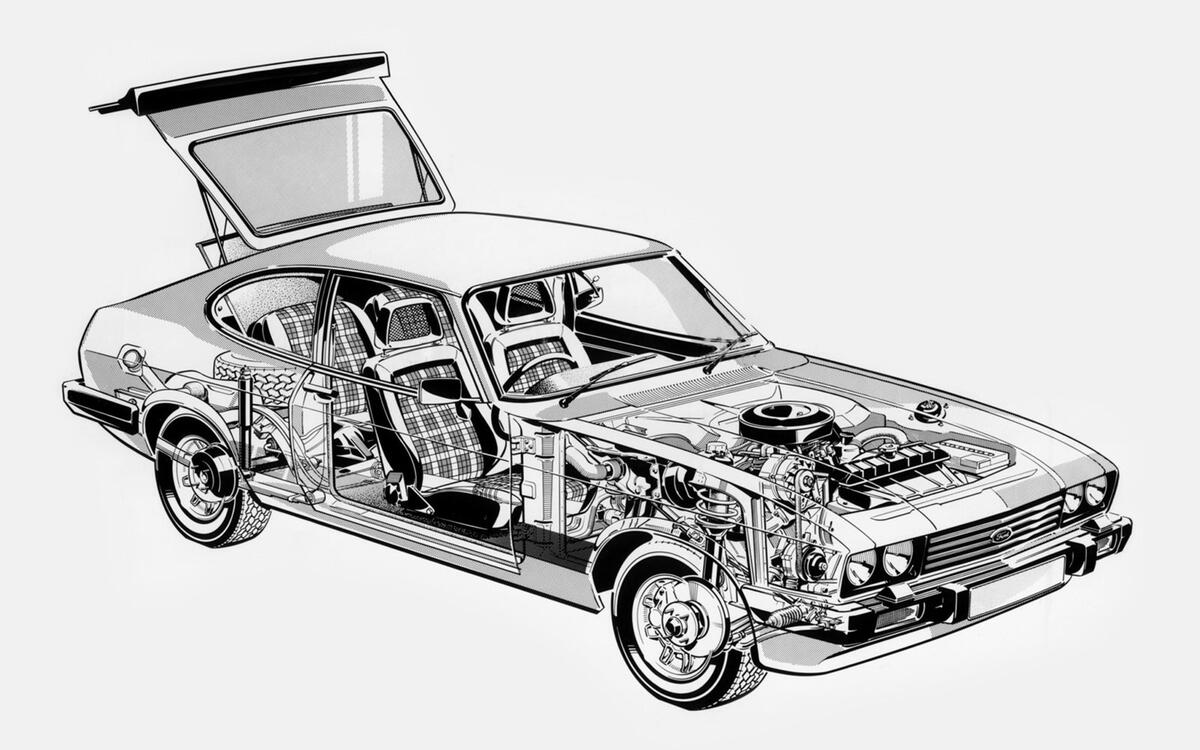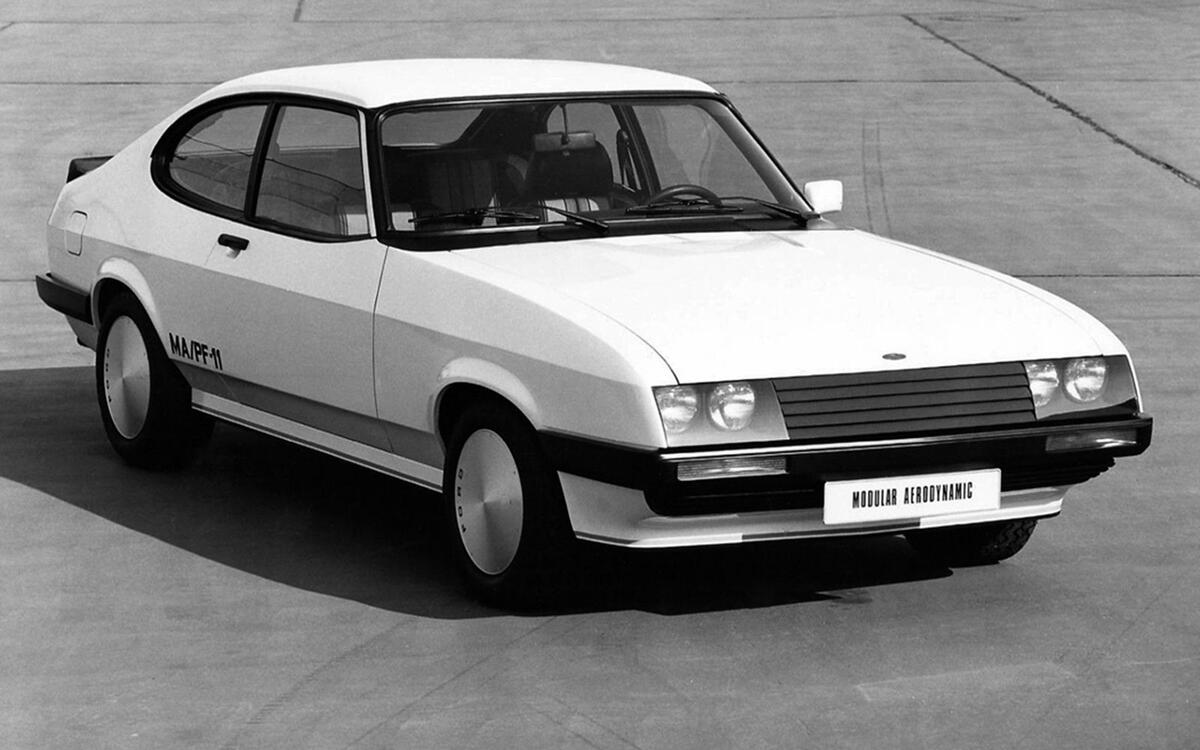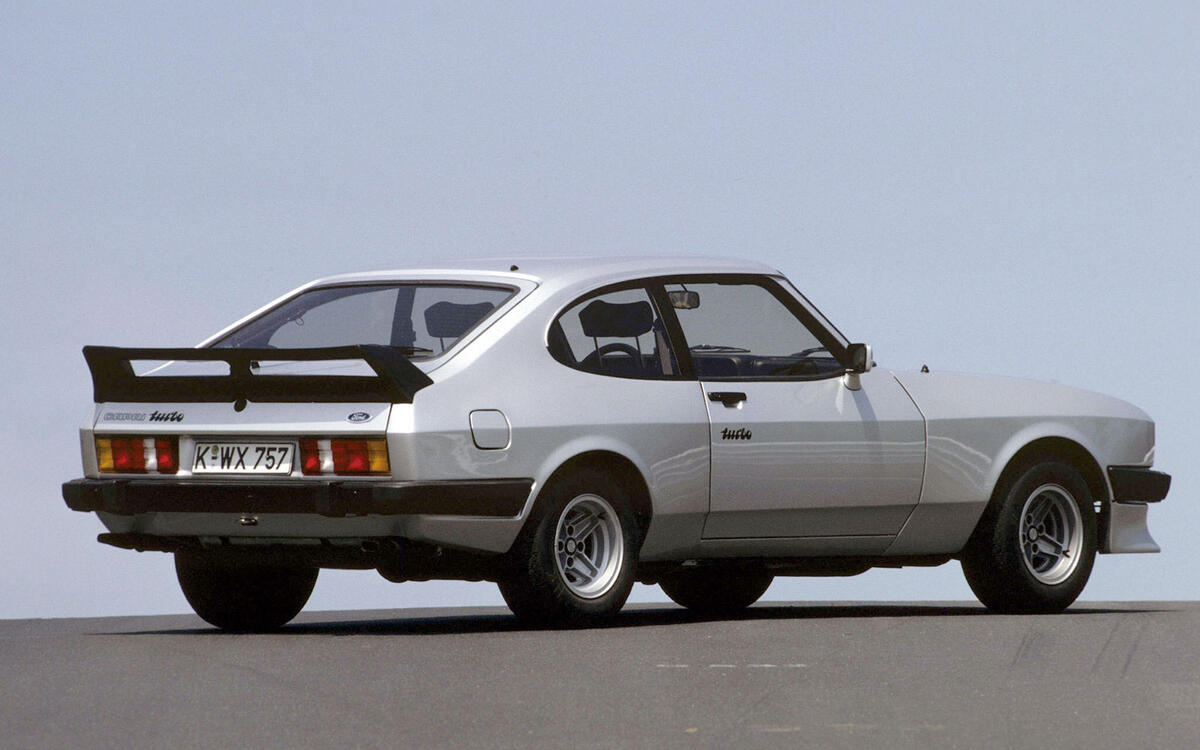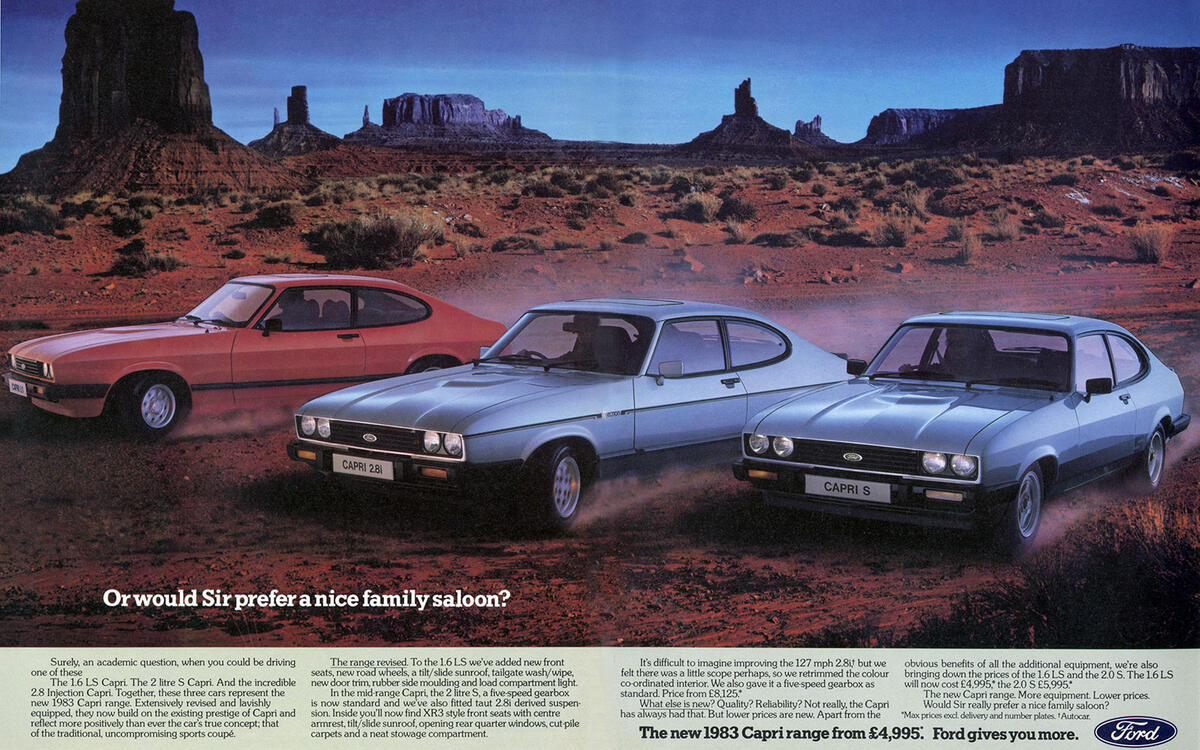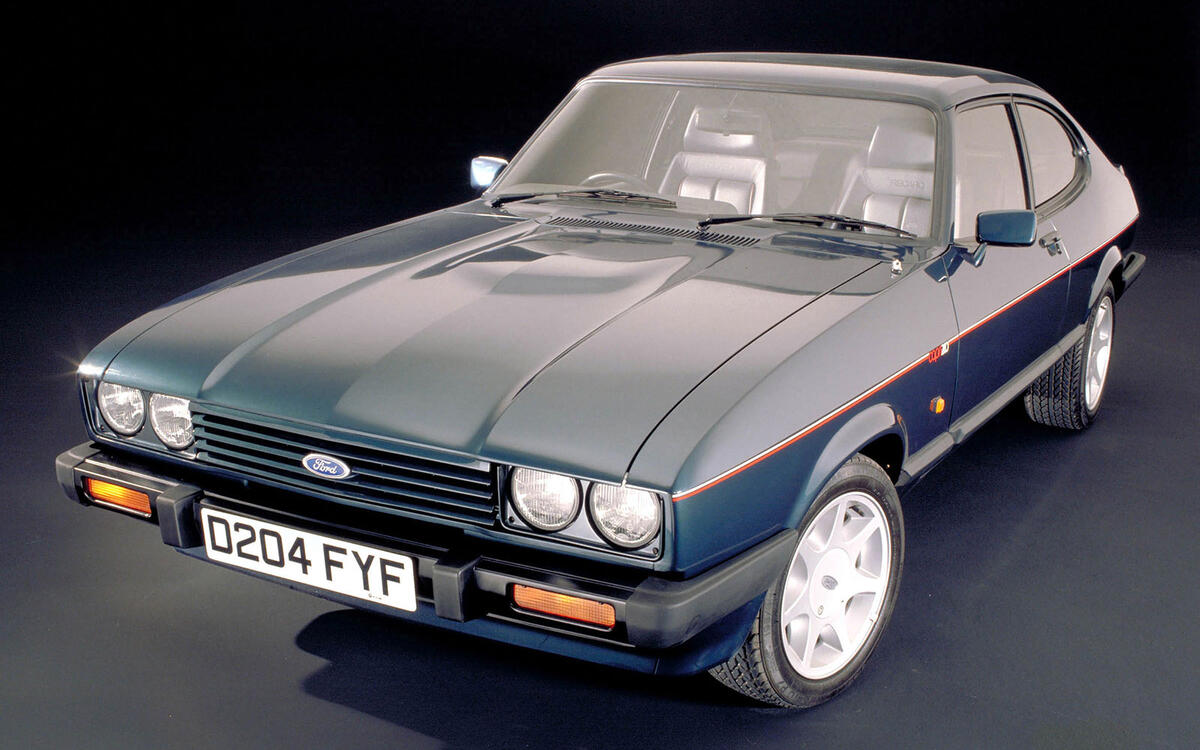 Slide of
Slide of
It's more than three decades since the Ford Capri went out of production, but these are still some of the most sought after classics ever created.
Far from being forgotten, today Capri values are soaring, with classic car fans continuing to promise themselves one of these stylish icons. Over 18 years of production there were three generations of Capri and almost two million were made. Here we look at how the Capri came about, how it developed and evolved, and the legacy that it left behind.
 Slide of
Slide of
Ford's original pony car
The Capri story started in 1964 with the launch of the Ford Mustang – the fastest-selling car in history. The original 'pony car' (affordable sporting coupé), Ford in America reckoned it could sell as many as 100,000 Mustangs in the first year. Within 18 months more than a million had been sold.
 Slide of
Slide of
The original Capri
As the Mustang was being launched, European buyers could already purchase a Capri. It was the Ford Consul Capri, an awkwardly styled two-door coupé that was closely related to the underwhelming Consul Classic. Power came from a 1.5-litre push-rod engine.
 Slide of
Slide of
Joining forces
Ford's German and British divisions were run separately in the 1960s, but they both fancied a piece of the Mustang's success, and for the first time ever they teamed up to create a car for Europe. Both divisions knew that the Mustang was too big – and so were its engines – for European buyers, but a pony car for this side of the pond would hit the spot if done right.
 Slide of
Slide of
Project Colt gets underway
Work on Project Colt began in 1965. Gordon Mackray worked for Ford in the US and he came up with some initial sketches, which were refined by British designer Neil Birtley. Ford progressed with two different designs, both of which shared the same basic characteristics of long bonnets, a sleek coupé profile and sharply truncated tails.
 Slide of
Slide of
A design great is born
Until 1967 the rear pillar design was quite heavy and would leave rear-seat passengers feeling hemmed in, so the decision was made to glaze this section. It's a styling cue that would stay with the Capri for the next 18 years, although the hockey stick swage line would be used only for the Capri Mk1.
 Slide of
Slide of
Ordinary underpinnings
Whereas the Mustang was based on the relatively mundane Ford Falcon platform, the Capri's floorpan and (recalibrated) suspension were shared with the Cortina Mk2, which also donated its four-cylinder engines. Priced at a competitive £890 (around £15,000 in today's money) from launch, the Capri had a live axle with leaf-springs and drum brakes at the rear, MacPherson struts with disc brakes at the front, and a four-speed all-synchromesh gearbox – although a three-speed automatic transmission was available with the 1.6-litre engine.
 Slide of
Slide of
Production starts
Capri production began in December 1968, ready for the car's unveiling the following year. In the UK the car was made at Ford's plant at Halewood in Liverpool (now owned by JLR and today home to the Range Rover Evoque and Land Rover Discovery Sport), but the Colt name had to be dropped as Mitsubishi owned the rights to it, resulting in court action. Ford had to rethink and chose to adopt the Capri moniker that had last been used in 1964.
 Slide of
Slide of
Crash, bang, wallop
Although there was no official crash testing body back in the late 1960s, along the lines of Europe's Euro NCAP, Ford still flung its cars into walls to see how they'd perform. Here a Capri prototype meets its end and while the front end looks the worse for wear, the back end doesn't look too happy either. Must be all the computers in the boot.
 Slide of
Slide of
The Capri takes a bow
The Capri was unveiled at the 1969 Brussels Auto Show and the marketing campaign started almost immediately. The new sporting coupé was promoted as "The car you always promised yourself" – a motoring strapline that's become one of the most famous in history.
 Slide of
Slide of
UK sales begin
When the Capri Mk1 reached UK showrooms in spring 1969 it was offered with a wide range of engines, trims and options – all things that had been key to the Mustang's success in America. At first just four-cylinder engines were offered: 1300 or 1600 units in standard or GT trim, the latter getting more power, a centre console and extra instruments. GT buyers could also opt for an X-pack which added auxiliary lights, Rostyle wheels and – most important of all – a matt black bonnet.
 Slide of
Slide of
Autocar delivers its verdict
We went to Cyprus to drive the new Capri, covering 800 miles in four different variants – and we loved them. At the time we said: "All in all, these Capris are something entirely new from Ford, and are outstanding in many ways, notably their quietness, stability and controllability and in the precision and lightness of the steering and gearchange. There are inevitably one or two criticisms, the lack of legroom in the back being the most significant".
 Slide of
Slide of
The Capri gets six appeal
Soon after, in the UK the V4-engined 2000GT went on sale with the same equipment and options as the 1600GT, but it was in September that things started to get really fruity with the arrival of the 3000GT – the 2.0-litre V4 and 3.0-litre V6 powerplants were both part of Ford's 'Essex' engine family. Featuring a 3.0-litre V6 engine taken from the Ford Zodiac, a bonnet bulge and twin exhausts, this was (for now) the ultimate Capri.
 Slide of
Slide of
The family coupé
To encourage families to give the Capri a try, Ford played on the car's roomy cabin in its marketing…
 Slide of
Slide of
The affordable coupé
…as well as the car's affordability. The Capri may have been stylish and sporting but you didn't need deep pockets to buy one.
 Slide of
Slide of
Bull's-eye!
Ford had a hit on its hands with the Capri. Admittedly not on the scale of the Mustang in the US, but with very little competition, the Capri shared the segment only with the Sunbeam Alpine and Rapier. Later would come the Vauxhall Firenza, Opel Manta, Toyota Celica, Lancia Beta coupé/HPE, Renault 15/17 plus the Volkswagen Scirocco.
 Slide of
Slide of
A divided Europe
Before the Capri, Ford's German and British divisions had rarely collaborated. The Capri was built in both England and Germany and while there was a lot of crossover of the various models, German Capri buyers could opt for a 1.7-litre V4 engine which wasn't offered in the UK.
 Slide of
Slide of
Do you want jam with that?
With its ideal blend of pace and practicality, the Capri was just the thing for the police. We don't know how many police forces used Capris but we do know that Greater Manchester Police was among the first with this Mk1 and it used them right up until the 1980s.
 Slide of
Slide of
The Capri goes racing
Ford entered the Capri Mk1 into the European Touring Car Championship (ETCC) to boost its sporting credentials, which led to the introduction of the Capri RS2600. A homologation special, the RS2600 featured a 2673cc V6 engine with Kugelfischer mechanical fuel injection which put out 148bhp. Production ran from 1970 until 1974, with 3532 cars made.
 Slide of
Slide of
The Capri Mk1 hits its peak
Picking up where the RS2600 left off was Ford's next homologation special, the RS3100. ETCC rules said 1000 road-going RS3100s had to be built, but fewer than 250 examples were made thanks to the 1973 oil crisis. The road car got a 148bhp 3.1-litre V6 to give a 125mph top speed, ventilated disc brakes, lowered and stiffened suspension, a sports exhaust and a ducktail spoiler.
 Slide of
Slide of
The 4x4 Capri
In the 1960s Ferguson was developing all sorts of four-wheel drive oddities incuding a Triumph Stag, Ford Zodiac and also the Capri. Production numbers are hazy but it's reckoned that 17 were built, with the first cars constructed before the Capri was publicly unveiled. Created for entry in rallycross events, each 4WD Capri was powered by a 3.0-litre V6 engine tuned to give 160-200bhp.
 Slide of
Slide of
Something weird going on
We're not sure what's going on here but we found this shot while trawling through the archive. If you have any clue what's going on here please let us know, because we're utterly baffled by it.
 Slide of
Slide of
The specials start
Over the years there would be plenty of limited edition Capris, including the GT4, Calypso and Cabaret, but the first of them all was the Special, of which 1200 were built. Launched in October 1971 and based on the 2000GT, the Capri Special came with a black vinyl roof, slats over the rear windows, black seat trim and an optional rear spoiler. Nice.
 Slide of
Slide of
The king is dead…
After 1.16 million Mk1s had been built in just over five years, the Capri Mk2 was launched in 1974. Gone was the boot, replaced by a hatch, and this, matched with folding rear seats made the Capri more usable than ever. Despite this the Mk2 would never be as popular as the Mk1 – and neither would the Mk3. Indeed, the production numbers for these two iterations combined, despite a 12-year production run between them, would be just half that of the Capri Mk1.
 Slide of
Slide of
The Capri grows up…
The Capri Mk2 was more grown up than its predecessor, in a bid to make it as usable as possible. The interior was more luxurious and the car was widened by two inches to give more cabin and boot space. The 2.0-litre V4 engine was replaced by an in-line Pinto unit of the same displacement – but a 1.6-litre engine was still available for impecunious buyers, or there was still a 3.0-litre V6 for those at the other end of the spectrum.
 Slide of
Slide of
…but becomes less sporting
Ford watered down the Capri's sporting credentials with the Mk2, by softening its suspension, although there were also bigger front disc brakes and power steering for the more expensive editions. Years after many of Ford's rivals had switched from dynamos to alternators, the Capri Mk2 finally got the latter.
 Slide of
Slide of
A wide model range
Picking up where the Capri Mk1 left off, buyers could choose from a wide range of engines including 1.3, 1.6 and 2.0-litre four-cylinder units. There was also a 3.0-litre V6, but buyers had been confused by the array of trim packs with the Capri Mk1, so Ford reduced the personalisation options with the Mk2 – not least of all because the dealers were often as confused as the customers.
 Slide of
Slide of
The Capri goes Stateside
Although the Capri was conceived as a pony car for Europe, Ford also enjoyed success with it in South Africa, Australia – and America, where it was sold through Lincoln-Mercury dealers. Only the Capri Mk1 and Mk2 were offered Stateside though, with sales ceasing in 1978 when the Capri Mk3 was launched.
 Slide of
Slide of
Capri finds a Playmate
When Claudia Jennings was crowned Playmate of the Year in 1970 she was given this Mercury Capri Mk1, which is parked here in front of Hugh Heffner's Douglas DC-9 aircraft. We're not sure the Capri looks too pretty in pink…
 Slide of
Slide of
John Player Special
In 1975 Ford's works racing team was sponsored by John Player Special (cigarettes) and to capitalise on this a Capri JPS went on sale. Finished in the corporate black (or white) and gold colours of John Player Special, the JPS cars featured blacked-out trim, firmer suspension than standard and gold coachlines for the alloy wheels. Buyers could choose between 1.6, 2.0 or 3.0 V6 engines; whatever powerplant was chosen, its number would feature the letters 'JP'.
 Slide of
Slide of
Autocar gives its verdict
We reckoned the Mk2 was an advance over its predecessor: "There is no doubt that the Capri II range in general represents a vast improvement on earlier models. Almost entirely, this is attributable to the improved luggage carrying capacity and the larger glass area. Amongst fringe benefits are such things as better sound insulation and cleaner looks". Incidentally, the 'back again in print' reference on the 30 March 1974 cover is nothing to do with the Capri returning – it's because a printer's strike led to Autocar being unavailable for more than four months.
 Slide of
Slide of
Marketing the Mk2
Ford had always played on the Capri's affordability and usability, but it went all-out with the Mk2 to promote its family-friendliness while also remaining true to its stylish roots. Well, that was what it wanted buyers to believe, but it was an uphill struggle getting them to do so…
 Slide of
Slide of
The star fades
The Capri's biggest production years were in the early 1970s, with production peaking at 238,914 in 1970 – that's across the three plants at Halewood, Cologne and Saarlouis. By 1975 Capri II sales were running at half this with production ending in Britain in 1976, from which point all Capris were built in Germany.
However, the Germans didn't take to the Capri II as they felt it wasn't sporty enough. Ford of Germany made 882,264 Capri MkIs between December 1968 and October 1974, but just 318,758 Capri Ils between December 1973 and January 1978.
 Slide of
Slide of
Third time lucky
By April 1977 Ford had a development programme in place, using the project name Carla, to update the Capri II. In March 1978 the outcome was unveiled at the Geneva Motor Show – the Capri Mk3. Buyers could choose between 1.3, 1.6 and 2.0-litre four-cylinder engines, or a 2994cc V6. Top of the range was the 3.0 X-pack.
 Slide of
Slide of
The Modular Aerodynamic concept
The number of changes between the MkII and MkIII Capris was relatively small, with the development of the car taking less than a year. The Capri Mk3's roots lay in a concept shown at the 1976 Geneva motor show called the Modular Aerodynamic (pictured), which was a cross between a Capri II and an Escort Mk2 RS2000.
 Slide of
Slide of
X marks the spot
For many, the dream Capri was a 3.0-litre V6 edition with an X-pack. This brought wide arches made of glassfibre, bonded to the bodywork, larger front brake discs, a limited-slip differential and an uprated engine. Buyers could choose between 170bhp or 185bhp powerplants – but only between 1977 and 1980. After this date the option was canned in readiness for the arrival of the 2.8i.
 Slide of
Slide of
Kat kit
You didn't have to buy the official factory bodykit if you wanted your Capri to stand out from the crowd. During the 1980s there was an array of companies that could flog you some plastic extrusions to fix to your Capri's sills and nose, one of the best known being Kat Designs which offered bodykits for all sorts of cars of the period.
 Slide of
Slide of
Richard Grant
Another big player in the world of bodykits was Richard Grant Accessories, which offered this, er, eye-catching set of skirts and spoilers to make your Capri stand out from the crowd. Let's just say that these kits were of their time…
 Slide of
Slide of
Marketing the Mk3
As already mentioned, when the Capri MkI arrived it brought with it one of the most memorable straplines in history. But the slogan that Ford dreamt up for the Mk3 was altogether more forgettable: "The difference between driving and just motoring". So the next time you're doing a motoring quiz for your mates, drop that one in and see how they get on.
 Slide of
Slide of
Capri sales collapse
In 1978 Capri sales fell to just 69,112, but the introduction of the Mk3 led to things improving, with sales increasing to more than 85,000 in 1979. But the revival was brief with just 41,753 cars made in 1980 and by this point it was only the UK that was still buying the Capri in significant numbers. In 1985 just 9262 Capris were made.
 Slide of
Slide of
All hail the Capri 2.8i
For many the ultimate mainstream Capri arrived in July 1981 – the 2.8i. Out went the carburetted 3.0-litre V6 Essex engine and in came Ford's 2.8-litre Cologne V6. The first car to be developed by Ford's Special Vehicle Engineering (SVE) division led by ex-racer Rod Mansfield, the Capri 2.8i packed a 158bhp punch to give 130mph. The first cars featured a four-speed manual gearbox but a five-speeder became standard fare within about a year.
 Slide of
Slide of
A Special Capri
With the arrival of the 2.8 Injection Special (or 2.8iS) things got even more, well, special. Bringing with it part-leather trim, the 2.8iS got seven-spoke alloys, a colour-coded grille and headlamp surrounds plus a limit-slip diff – but the 158bhp engine was carried over unchanged.
The 2.8iS cost £9500 - or about £30,000 in today's money. As the advert says, our What Car? colleagues said "there's nothing to beat it at the price."
 Slide of
Slide of
The Capri Turbo
With the Mk3, German buyers were still able to buy a Capri that wasn't sold in the UK. This time it was the Turbo, offered from mid-1981 until mid-1982. Sold only through German RS dealers, the Capri Turbo was fitted with a carburetted 2.8-litre Cologne V6 equipped with a Garrett T4 turbocharger to give 188bhp. It's reckoned around 155 examples were built.
 Slide of
Slide of
The Autocar verdict
When we drove a Capri Mk3 3000S we pronounced: "It would be difficult to find an excuse for not buying one or other version of the 3-litre Capri if one is seeking value for money and close-on-120mph performance. It is at least £1000 cheaper than any comparable car, and disregarding the extrovert exterior finish, and strangely poor fuel consumption, it has the advantage over its rivals of being totally practical and unfussy transport. The 3000S remains a hard act to follow, in terms of value for money and sheer roadworthiness".
 Slide of
Slide of
Priced to sell
Read those prices and weep. A brand new Capri 2.8i for just £8250! And if you don't care too much about performance you can get into your own Capri for less than five big ones. At the time, for eight grand you could also have bought a range-topping Fiat Regata 100S, half a Jaguar XJ40 2.9 or a Reliant Scimitar SS1 1600. A Mazda RX-7 weighed in at £15,250, a Lotus Excel was £17,590, while an Alfa Romeo GTV6 2.5 was £13,149, making the Capri something of a bargain.
 Slide of
Slide of
The Tickford Capri
The lairiest Capri of all was unveiled at the 1982 British motor show – the Tickford Capri. With its 205bhp turbocharged 2.8-litre Cologne engine the Tickford Capri was good for 140mph and 0-60mph in around 6.5 seconds, but just 88 were made, partly because of the £15,000 asking price and partly because those in-yer-face looks were an acquired taste.
 Slide of
Slide of
No more jam
In the late 1980s Greater Manchester Police said farewell to its last Capri, with the Sierra RS Cosworth taking over the reins. The new car was much faster, much easier to drive at high speeds and was also available with four-wheel drive for year-round security.
 Slide of
Slide of
The final edition
The Capri remained on sale in the UK until 1986 – left-hand drive production ended on 30 November 1984. The final 1038 Capris were all Brooklands 280 editions, with metallic green paintwork and a 2.8i V6 Cologne engine tuned to give 160bhp – enough to give a 125mph top speed. Fitted as standard were seven-spoke RS alloy wheels along with leather trim.
 Slide of
Slide of
It's all over
By the time the final 280 Brooklands rolled off the production line in 1986, no fewer than 1,888,647 Capris had been built. While the Capri's sales tally might not have been as big as the Mustang's, compared with other European coupés it was impressive. And let's face it, none of those rivals has left a legacy like the Capri's.
 Slide of
Slide of
The Capri's legacy
More than three decades after the Capri was axed it's more loved than ever, and although Ford created two successors to its much-loved coupé, it's never been able to generate the following that the Capri had. The first Capri wannabe was the Probe, launched in 1988 in the US, but Europe had to wait until 1993 for the second take on this smart-looking three-door hatch. Production lasted until 1997.
 Slide of
Slide of
The Cougar
The most recent attempt to follow in the footsteps of the Capri was the Cougar, which made its European debut in 1998; it wouldn't arrive in the US until the following year. Another car that was brought over from the States, the Cougar used Mondeo oily bits which meant a 2.0-litre four-pot or a 2.5 V6, but sales were never all that brisk and by 2002 the car had been axed.
The Ford Capri was launched half a century ago. This is the full story of three generations of greatness
Advertisement

